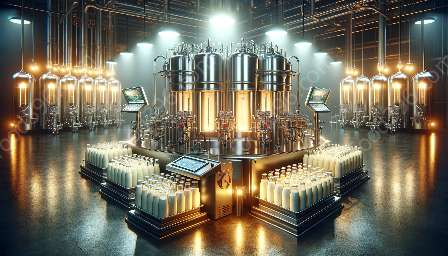Pasteurization is a crucial process that has revolutionized food preservation and processing, ensuring safety and extending shelf life. This method involves heating liquid foods to a specific temperature to kill off harmful microorganisms, thus preventing spoilage and enhancing food safety. The history of pasteurization is both fascinating and essential to understanding its impact on modern food industry.
Discovery of Pasteurization
The history of pasteurization dates back to the 19th century when Louis Pasteur, a renowned French chemist and microbiologist, made groundbreaking discoveries in the field of microbiology. In the 1860s, Pasteur conducted extensive research on the spoilage of beverages, particularly wine and beer, and identified the role of microorganisms in the fermentation process. He recognized that these same microorganisms were responsible for spoilage and contamination of these products.
Building on his studies, Pasteur developed a method of heating these beverages to a specific temperature, then rapidly cooling them to prevent spoilage and extend their shelf life. This process came to be known as pasteurization, named after its pioneering creator, and it soon evolved into a vital tool for preserving perishable foods.
Impact on Food Safety
The introduction of pasteurization had a profound impact on food safety and public health. Previously, contaminated and spoiled food and beverages were responsible for widespread illness and often led to outbreaks of diseases such as cholera and typhoid. Pasteurization significantly reduced the risk of such diseases by effectively killing harmful bacteria, ensuring that the products reaching consumers were safe for consumption.
In addition to its role in beverage production, pasteurization was later applied to milk, greatly reducing the incidence of diseases such as tuberculosis and brucellosis, which could be transmitted through unpasteurized milk. This application of pasteurization helped to safeguard the health of consumers and contributed to the overall improvement of public health.
Technological Advancements
Over time, technological advancements have further refined the process of pasteurization, allowing for more precise control of temperature and duration. This has enabled the preservation of a wider range of foods, from fruit juices to canned goods, ensuring that they remain safe and palatable for extended periods. The development of high-temperature, short-time (HTST) pasteurization and ultra-high-temperature (UHT) processing has provided even greater flexibility and efficacy in preserving various food products.
Integration into Food Industry
The history of pasteurization is closely intertwined with the evolution of the food industry. As the importance of food safety became increasingly recognized, pasteurization became a standard practice in the production of a wide variety of food and beverage products. This widespread adoption has been instrumental in reducing foodborne illnesses and ensuring the availability of safe, high-quality food for consumers.
Furthermore, pasteurization has played a pivotal role in facilitating the globalization of the food industry. By extending the shelf life of perishable products, it has enabled the transportation and distribution of food over long distances, allowing consumers to enjoy a diverse range of products from around the world.
Challenges and Controversies
Despite its numerous benefits, pasteurization has also faced challenges and controversies. Some critics have raised concerns about the potential loss of nutritional value in pasteurized foods, particularly regarding the destruction of heat-sensitive vitamins and enzymes. Additionally, there have been debates surrounding the use of pasteurization in organic and artisanal food production, as some argue that it may compromise the integrity and authenticity of such products.
Moreover, as with any food processing method, ensuring the proper implementation of pasteurization standards and regulations is essential to prevent lapses that could compromise food safety. Striking a balance between the benefits of pasteurization and its potential drawbacks continues to be a topic of discussion within the food industry and among consumers.
Future Developments
Looking to the future, ongoing research and development efforts are focused on enhancing the efficiency and sustainability of pasteurization methods. Innovations in heat exchanger technologies, energy efficiency, and the integration of advanced monitoring and control systems aim to further improve the process and minimize its environmental impact.
Additionally, there is growing interest in exploring novel methods of food preservation that complement or supplement traditional pasteurization while addressing some of its perceived limitations. These advancements promise to shape the future of food preservation and processing, ensuring that consumers continue to have access to safe and high-quality food products.
Conclusion
The history of pasteurization is a compelling narrative of scientific discovery, technological innovation, and its profound impact on food preservation and processing. From its origins in the research of Louis Pasteur to its widespread integration into the food industry, pasteurization has emerged as a cornerstone of food safety and quality. The ongoing evolution and potential future developments in pasteurization underscore its enduring significance in ensuring the availability of safe, nutritious, and diverse food for consumers worldwide.

